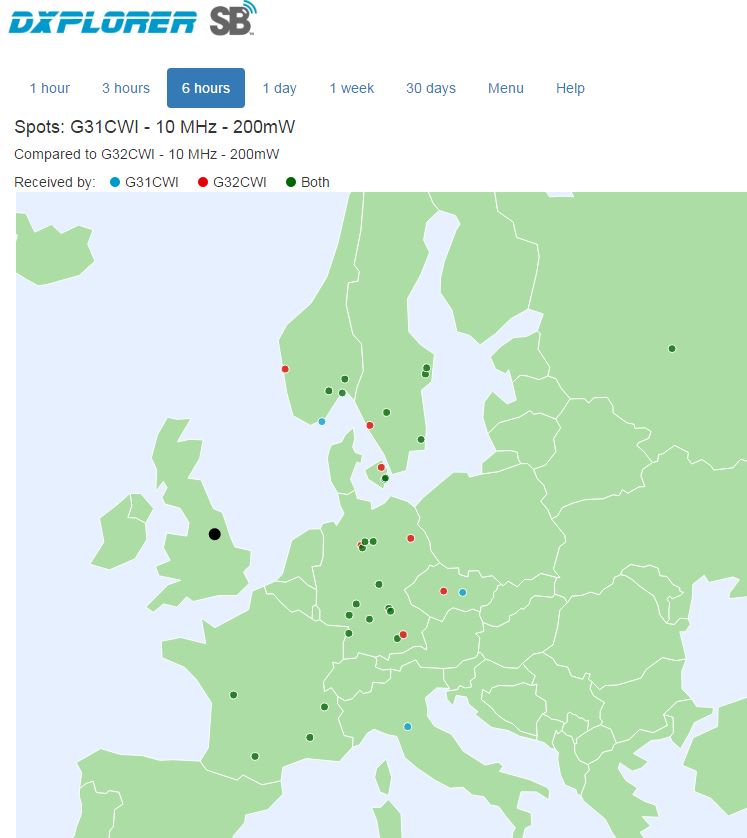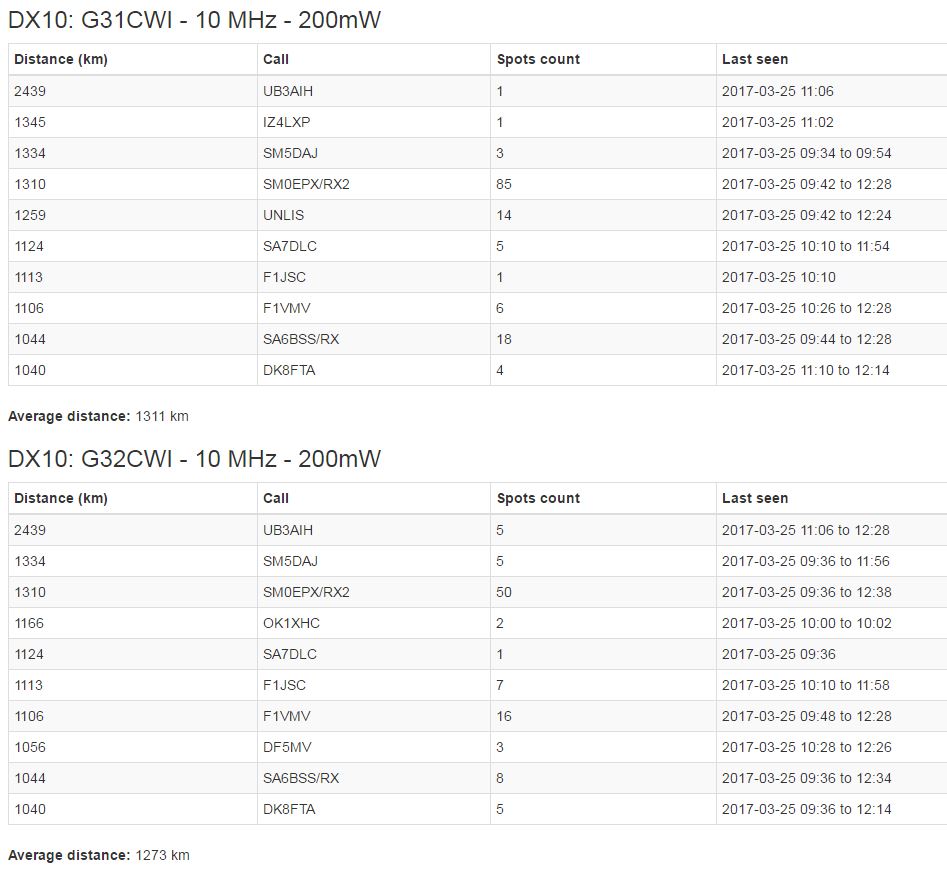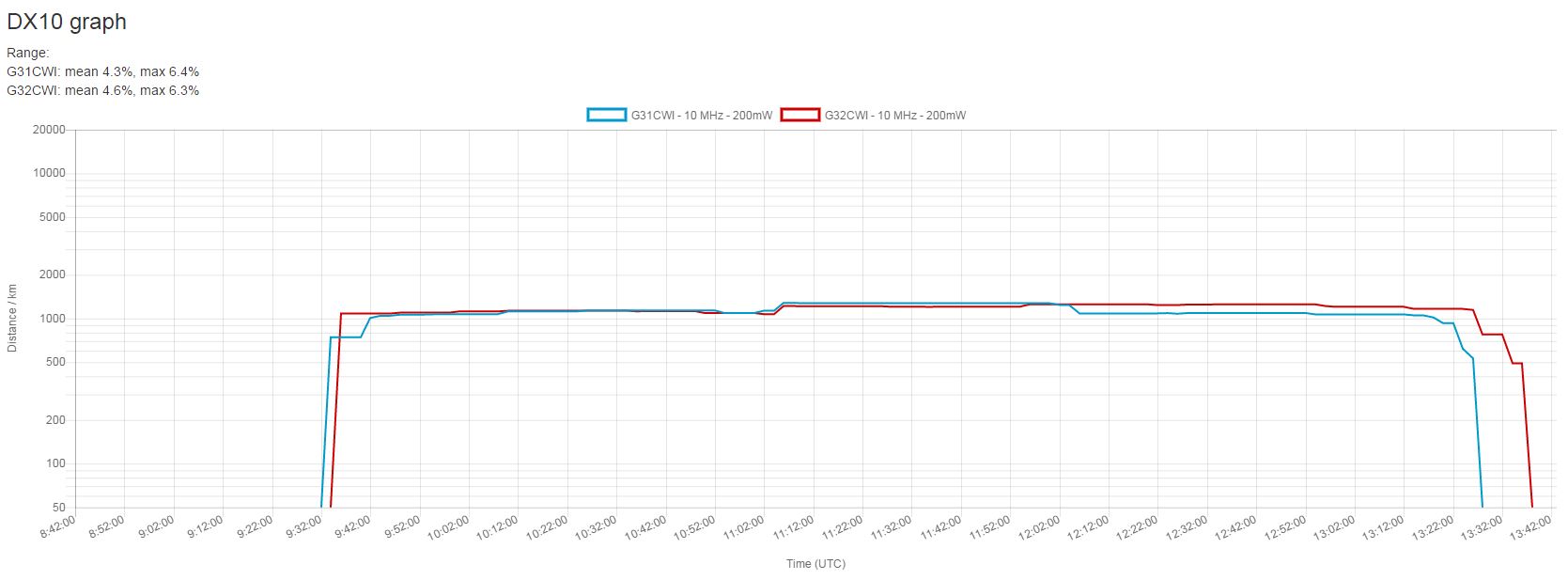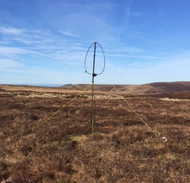Comparing two commercial small transmitting loops
Posted by Richard Newstead on 26th Mar 2017
Method
A Chameleon P-Loop and an Alexloop were erected in an open flat area. The area was clear of any obstructions. The antennas were 30 metres apart and orientated in the same way (approx. 064 mag). they were placed so that they sat in the predicted nulls of each other to reduce interactions. The base of the antennas were 1.4 m above ground level.
Each antenna was connected to an identical WSPRlite test transmitter. Both WSPRlites were set to 200mW, 30m band, 50% repeat rate.
The experiment was carried out on 25th March 2017. Testing commenced at 09:30 local and continued until 12:30 local time (3 hours)
Chameleon P-Loop = G31CWI, Alex Loop = G32CWI

Results and discussion
During the test period 629 reports were gained from 36 separate receiving stations. Data was analysed in real-time using DXplorer.net.
Distribution of Reporting Stations

The reporting stations were distributed to the east of the test site. Of the 36 stations, 26 received transmissions from both antennas, 3 received transmissions from the P-Loop only and 7 others received transmission from the Alex Loop only.
DX10 Table
The following is a DX10 table for the period. The DX10 metric is described here.

The average DX10 metric for the reporting period slightly favours the P-Loop (G31CWI).
DX10 Graph

The DX10 graph for the period shows the very close correlation for the antennas slightly favouring the Alex Loop (G32CWI).
Conclusions
On the 30 metre band, there is very little difference in RF performance between these two antenna.



